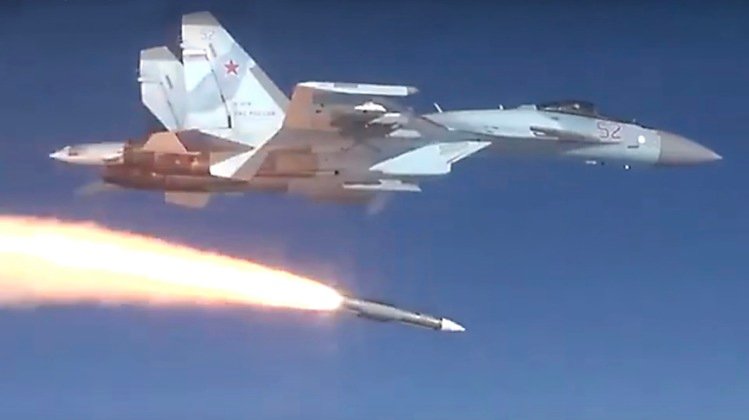<p >The Iranian Air Force has reportedly begun construction of new hardened facilities for large heavyweight fighter aircraft at the service’s 3rd Tactical Air Base located 47 kilometres north of Hamedan – a facility colloquially known as Hamedan Air Base. Satellite images showing the construction have fuelled speculation that the facility could soon host <a href=" target="_blank">Su-35 fighter aircraft</a> that are confirmed to have been ordered from Russia. Claims to this effect are supported by the dimensions of the hangers, which are far too large for the requirements Iran’s existing aircraft. Located in the west of the country, the facility is well positioned to allow a Su-35 squadron to quickly respond to threats of air incursions from the country’s regional archival Israel, or from NATO member Turkey which also hosts large numbers of Western military aircraft. The base is also located near the Iranian capital Tehran and several key nuclear facilities. The Su-35’s wide combat radius of over 2000 kilometres also allows the aircraft to very comfortably project power overland into the Middle East, or to loiter across the Straits of Hormuz, from Hamedan Air Base.&nbsp;</p><p ><img src=" title="Hamedan Air Base"></p><p >There remains a significant possibility that Su-35s delivered to Iran will be split between two or more facilities, allowing them to cover more regions of the country and limiting the fleet’s vulnerability to strikes on any particular one. The heavily fortified Eagle 44 underground airbase <a href=" unveiled</a> in early February 2023 also appears to have been <a href=" target="_blank">built to accommodate</a> Su-35s, although whether a unit will be permanently based there, or whether it is instead intended to be able to accommodate rotational deployments, remains uncertain. A major benefit of dispersing Su-35s across multiple facilities is that the aircraft are the only ones with non-obsolete sensors in the Iranian fleet, and can thus serve as force multipliers for units deploying older fighters such as F-4Es and F-14s. The presence of even a small number of Su-35s can drastically improve situational awareness, reduce susceptibility to jamming, and potentially even help guide radar guided missies to their targets if an effective data link system has been installed on older aircraft. The fighter’s <a href=" target="_blank">Irbis-E radar</a> is over twice the size of those carried by American F-16s, F-18s and F-35s, and is the only one in Iranian service to use an electronically scanned array.&nbsp;</p><p ><img src=" title="Iranian Air Force F-4E Fighters at Eagle 44 Airbase"></p><p >The Su-35 is today overall the most capable fighter class in Russian service to equip multiple regiments, and is based on the design of the&nbsp;<a href=" >Su-27 Flanker</a>&nbsp;air superiority fighter. The aircraft is thought to have gained far more&nbsp;<a href=" >air to air kills&nbsp;</a>than any other post Cold War fighter class, primarily due to its central role in the war in Ukraine, with Su-35s having participated in&nbsp;<a href=" >major air battles</a>&nbsp;with Ukrainian fourth generation fighter units where they gained&nbsp;<a href=" >overwhelming victories</a> in the war’s early weeks. Notable features include the fighter’s integration of three dimensional thrust vectoring engines for extreme manoeuvrability, its very high endurance allowing it to far outrange any Western fighter class, and its deployment of <a href=" target="_blank">three complementary radars</a>, including two L-band radars in its wing roots optimised for detecting stealth aircraft and launching electronic attacks. The fighter is also compatible with the R-37M air to air missile, which has a range of up to 400 kilometres when fired from high speeds and altitudes, a Mach 6 speed and a large 61 kilogram warhead. The missile class allows Su-35s to pose a major threat to support aircraft such as tankers, and AEW&amp;Cs, as well as to bombers, well beyond the retaliation range of their escorts. Deployment of the R-37M could allow Iranian Su-35s to make a particularly significant contribution to the country’s defence even if the aircraft are deployed in only limited numbers, with none of the country’s adversaries operating a similarly long ranged missile class.</p>
New Airbase for Iran’s Su-35 Fighters Position Them For Key Air Defence Roles

